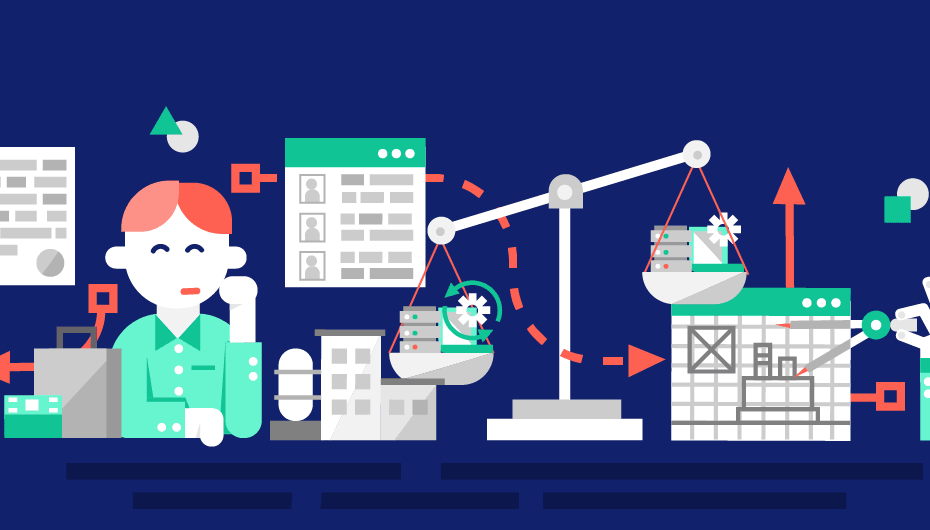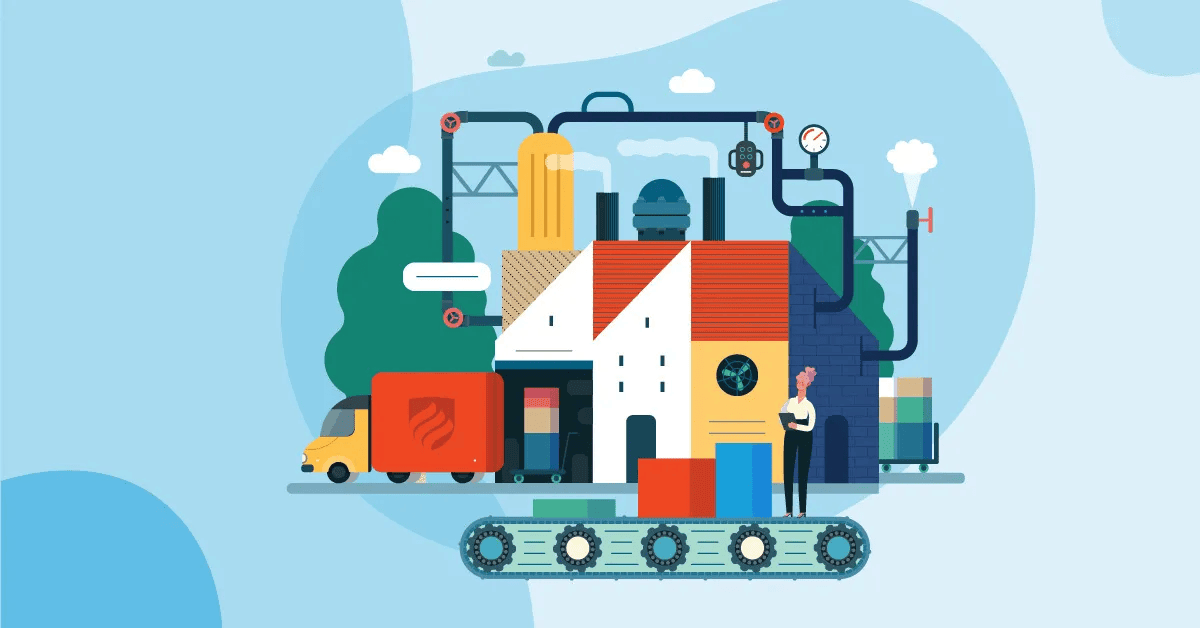The Hidden Landmine of Global Sourcing (And How to Avoid It Without Developing an Ulcer)
Imagine investing $50,000 in a product order, only to receive a shipment of defective goods that destroys your business reputation overnight. Suddenly your glowing reviews turn into one-star rants, your return rate skyrockets faster than a SpaceX launch, and your customer service team develops a collective eye twitch. This nightmare scenario happens more often than you'd think – especially when importing from China with all the strategic planning of a toddler in a candy store.
In the rapidly evolving global manufacturing landscape of 2025, selecting the right factory isn't just a choice; it's your business's lifeline. It's the difference between "successful entrepreneur" and "person who now works at their uncle's insurance agency while explaining to friends what happened to that business they used to talk about constantly."

Why Traditional Sourcing Methods Are Failing (Or: Why Your 2015 Playbook Now Belongs in a Museum)
The digital age has transformed manufacturing sourcing like Netflix transformed Blockbuster – suddenly, decisively, and with no sympathy for those who refuse to adapt. The old spray-and-pray method of sending random inquiries on Alibaba (accompanied by a prayer to whatever deity oversees international commerce) is dead. It's like trying to find your soulmate by shouting "WHO WANTS TO DATE ME?" in a crowded mall – ineffective, slightly embarrassing, and likely to attract exactly the wrong candidates.
Modern importers need a laser-focused, strategic approach that goes beyond surface-level interactions, much like modern dating requires more effort than swiping right and typing "hey."
6 Game-Changing Steps for Bulletproof Factory Sourcing in 2025 (Because Anxiety Medication Is Expensive)
1. Know Your Product Inside Out 🔍 (Not Just "It's Like That Other Thing But Better")
In 2025, product complexity is skyrocketing. Understanding isn't optional; it's mandatory – like oxygen or wifi passwords. Gone are the days when you could get away with vague descriptions and "I'll know what I want when I see it" attitudes.
What You Must Know:
- Precise technical specifications (not "make it good quality")
- Compliance requirements for your target market (because explaining to customs why your product is being held is a special kind of nightmare)
- Quality benchmarks (defined by actual measurements, not vibes)
- Potential technological integrations (no, "make it smart" is not a specification)
Pro Tip: Create a comprehensive product specification document that leaves NO room for misinterpretation. If your specs are open to interpretation, they'll be interpreted in the most cost-saving way possible, which rarely aligns with your vision of product excellence.
Reality Check: If you can't explain your product in detail to a 10-year-old, you're not ready to explain it to a manufacturer on the other side of the world who speaks English as a second language.
2. Smart Research: Beyond Traditional Platforms 🌐 (Because Everyone and Their Cousin Is on Alibaba Now)
While platforms like Alibaba remain relevant (like email or wearing pants in public), the most innovative manufacturers are now found through:
- Specialized industry LinkedIn groups (where real professionals hide from the "hustle culture" influencers)
- AI-powered supplier discovery platforms (matching algorithms for business, but less disappointing than dating apps)
- Targeted Google and Baidu searches (using search terms more specific than "good factory China")
- Virtual and hybrid trade shows (where you can judge manufacturers from the comfort of your pajamas)
- Industry-specific professional networks (where people talk about injection molding techniques for fun)
Stealth Technique: Look for manufacturers who supply your competitors' suppliers. It's like dating your ex's friend's ex – slightly awkward but potentially rewarding.

3. Craft a Professional Request for Quote (RFQ) 📋 (First Impressions Matter, Just Like Your Dating Profile)
Your RFQ is your first impression. Make it count. A sloppy RFQ is like showing up to a job interview in sweatpants – technically functional but sending all the wrong signals.
RFQ Essentials:
- Detailed product specifications (with actual numbers, not just "high quality")
- Volume expectations (realistic ones, not your "if Oprah features us" fantasy numbers)
- Quality control requirements (specific enough to be enforceable)
- Compliance certifications needed (because nobody wants to star in "Locked Up Abroad: Consumer Product Edition")
- Projected long-term partnership potential (factories like stability almost as much as they like profit)
What Not To Do: "Hi, can you make a water bottle like Hydro Flask but cheaper? Need price ASAP. Thx!" (This is the manufacturing equivalent of a "u up?" text at 2 AM)
4. Rigorous Supplier Vetting: The Non-Negotiable Checklist ✅ (Trust But Verify, Then Verify Again)
In 2025, vetting goes far beyond basic communication, like "Do they respond to emails?" and "Are they an actual company?" Consider:
Comprehensive Vetting Factors:
- Digital communication efficiency (if they're still using a fax machine, run)
- Technological infrastructure (Does their "state-of-the-art" equipment predate your birth?)
- Sustainability practices (because customers now care if your products are made in a facility powered by endangered panda tears)
- Geopolitical stability of manufacturing region (some regions come with more risk than others, like choosing between Vegas and your local library for a quiet study session)
- Digital transformation capabilities (Can they adapt when you inevitably change your mind about product features?)
- Compliance with international labor standards (because "our workers are very happy" isn't documentation)
Investigation Strategy: Search for your potential supplier's name + "issues" or "problems" online. The internet never forgets, especially complaints.

5. Sample Validation: The Litmus Test 🔬 (Or: "Show Me What You've Got" Time)
Samples aren't just products; they're a window into a manufacturer's capabilities, attention to detail, and whether they actually read your specifications or just nodded enthusiastically while thinking about lunch.
Sample Evaluation Criteria:
- Precision matching your specifications (a 1cm difference might as well be a mile)
- Material quality (does it feel premium or like it might disintegrate during shipping?)
- Production consistency (can they make five identical pieces, or are you entering a manufacturing lottery?)
- Willingness to iterate and improve (do they get defensive or collaborative when you provide feedback?)
Critical Insight: The sample is the absolute BEST product they will ever make for you. If the sample has issues, production will make those issues look charming by comparison.
6. Factory Visits: The Ultimate Verification 🏭 (See the Kitchen Before You Eat the Meal)
While travel restrictions have changed site visits, innovative solutions emerge faster than excuses at a missed deadline meeting:
- Virtual factory tours with real-time streaming (not pre-recorded highlights showing only their cleanest corner)
- Third-party independent audit services (people who are professionally suspicious on your behalf)
- Blockchain-verified manufacturing documentation (because trust is good, but immutable digital verification is better)
- AI-powered remote quality assessment tools (when "eyeballing it" gets a high-tech upgrade)
Insider Technique: Ask to see the factory on an unannounced day. If they always need "two weeks to prepare," they're preparing a theatrical production, not showing you their actual operations.

The Hidden Costs of Getting It Wrong (Beyond Just Money, Though That's Bad Enough)
Choosing the wrong manufacturer isn't just about a bad batch of products. It's like choosing the wrong parachute – the initial mistake is just the beginning of your problems. It can mean:
- Reputation damage that follows you like a bad smell (the internet never forgets)
- Financial losses that make your accountant develop a nervous twitch
- Compliance risks that introduce you to government agencies you didn't know existed
- Potential legal complications that make your lawyer's children suddenly able to afford private universities
Terrifying Statistic: Up to 65% of new importers face significant quality issues in their first production run. Don't be the cautionary tale at the next entrepreneur meetup.
Your Next Steps (Because Reading Without Action Is Just Entertainment)
- Download our FREE Factory Sourcing Checklist (costs less than therapy after sourcing disasters)
- Schedule a 15-minute consultation with our sourcing experts (who have seen things that would make most importers wake up screaming)
- Implement these strategies systematically (not randomly when you remember them)
Final Thoughts (The Wisdom We've Earned Through Countless Failures So You Don't Have To)
Sourcing from China in 2025 isn't about finding the cheapest manufacturer – that's like choosing a surgeon based solely on who offers the lowest price. It's about finding a strategic partner who understands your vision, maintains impeccable quality, and grows with your business. Think of it less as "finding a vendor" and more as "entering a business marriage where divorce is extremely expensive."
Disclaimer: Always conduct your due diligence and consult with Our ChinafulLink Team before making significant sourcing decisions. We've seen things. Terrible things. Things involving shipping containers full of products that vaguely resemble what was ordered but are completely unsellable.
Remember: In manufacturing, "cheap" and "inexpensive" are different concepts with vastly different outcomes. Choose wisely.